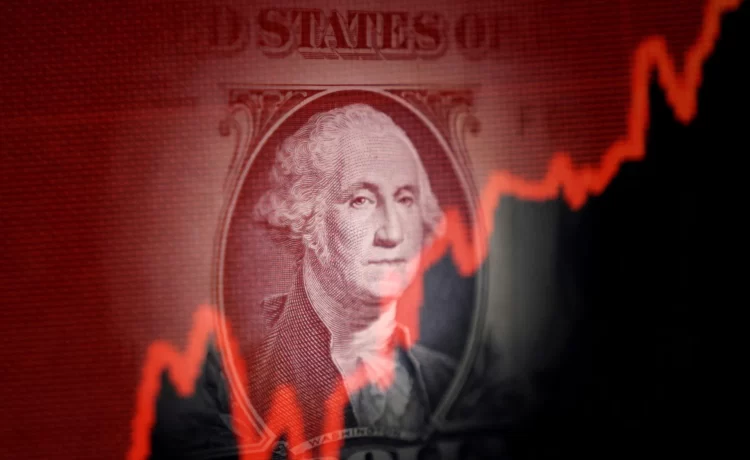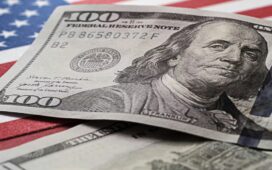Foreigners currently have more than US$30 trillion invested in US stocks and bonds
[NEW YORK] The long-awaited resumption of the Federal Reserve’s rate-cutting cycle is likely to cheapen hedging of US dollar exposure for foreign investors and increase their motivation to guard more of their US assets against further currency weakness.
In September, the US central bank lowered interest rates by an expected 25 basis points to 4.00-4.25 per cent on labour market concerns and indicated that more cuts would follow later this year.
That cut narrows the interest-rate differential between the US and other developed countries, which helps to lower the hedging costs for foreign pensions, sovereign funds and other institutional investors, managers and analysts said.
The ICE US Dollar Index is down about 10 per cent this year, partially driven by foreign investors increasing hedging activity on worries about the impact of US trade and tariff policies on their US assets, market participants said.
“There are some people that are watching it, that have been waiting for the resumption of the cutting cycle by the Fed,” said Van Luu, global head of solutions strategy for fixed income and foreign exchange for Russell Investments in London.
“Now they are inclined to raise the hedge ratio, and they’re waiting for the right moment or they’re waiting for some kind of catalyst.”
BT in your inbox

Start and end each day with the latest news stories and analyses delivered straight to your inbox.
Hedging is a way to limit losses on an existing portfolio by using financial instruments such as derivatives to create an offsetting position. Since it often involves selling US dollars via forwards or swaps, any rise in hedging activity can spell additional weakness for the beleaguered greenback.
New-found need to hedge
High hedging costs and a bullish view on the buck were two major factors suppressing FX hedging ratios in recent years, according to a June report from the Bank for International Settlements.
Years of US dollar strength meant that foreign investors could leave US assets unhedged since it boosted their overall returns and was a source of diversification. Now that’s set to change.
With the greenback down significantly this year and with more potential weakness on the horizon, hedging could help blunt the hurt from unfavourable FX moves.
Markets are pricing in about two more quarter-point rate cuts this year, which could incentivise investors who want to ramp up their hedges but have found the cost to do so a deterrent.
Foreigners currently have more than US$30 trillion invested in US stocks and bonds, according to Morgan Stanley, US$8 trillion of which is held by European investors.
Rising concerns over Fed leadership, its independence, and US policy uncertainty have helped keep pressure on the US dollar, even as US stocks have rallied. The S&P 500 is up about 14 per cent for the year, near a record high.
“The strong gains in US (stock) market and the very sharp US dollar falls are unusual but they’re not unheard of – we think an increase in hedging is part of the reason for this divergence,” said Steve Dooley, head of market insights at Convera in Melbourne.
A July research note from Deutsche Bank showed that equity investors in Germany and Austria have increased their hedge ratios to 60-70 per cent from 20-30 per cent at the start of the year.
A new report from the Danish central bank showed that insurance companies and pension funds are shielding almost three quarters of their US dollar investments from currency swings. The Deutsche note stated that some high-profile pension funds plan to top up those ratios after the summer.
“I think foreign investors are still inclined to hedge away their dollar exposure,” Thierry Wizman, global FX and rates strategist at Macquarie in New York, said.
“So they will come out again at some point in the next few weeks … you’re going to see another round of dollar hedging by foreign institutions,” he said. Research from MillTech also shows that 86 per cent of European corporates are currently hedging their forecastable currency risk, up from 67 per cent in 2023, with their mean hedge ratio rising to 49 per cent from 43 per cent.
Joseph Hoffman, chief executive officer at Mesirow Currency Management, said the shift among international investors is not mainly about short-term interest-rate advantages, but is driven “more by a bearish structural view on the dollar rooted in the Fed’s policy, heightened political uncertainty, and persistent fiscal deficits”.
Cost of hedging
Still, a lower cost of hedging will likely draw those investors who may have held off boosting hedges due to price considerations.
For instance, the 4 per cent annual hedging cost for investors in Japan and Switzerland, based on current interest rates, remains a big hurdle. It costs other euro-based investors around 2 per cent annually.
“I think there’s like a psychological level that if the hedge cost goes to 1 per cent or below, which is on the horizon for EUR investors over the next 12 months, people wouldn’t worry about it as such,” said Russell’s Luu.





